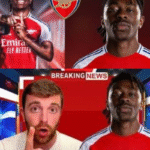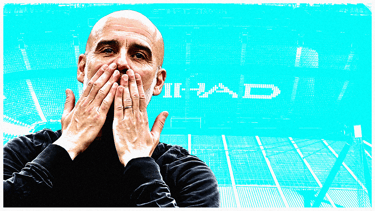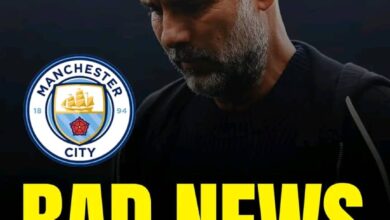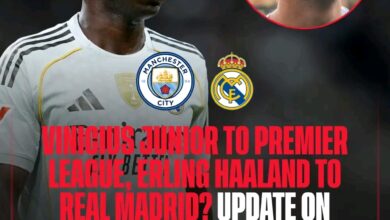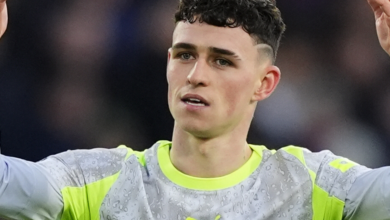Arsenal’s Summer Transfer Strategy: A Comprehensive Analysis
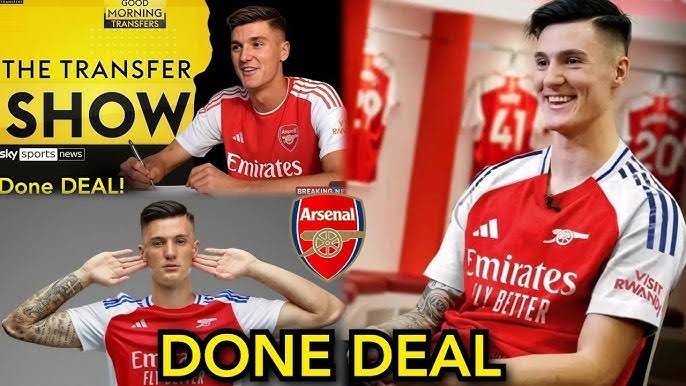
Arsenal Football Club finds itself at a pivotal juncture in their ongoing project under Mikel Arteta’s stewardship. Following the commencement of the Club World Cup in the United States, the Gunners have embarked on an ambitious summer transfer window that promises to reshape their squad for the challenges ahead. The North London club’s approach this summer reflects a methodical and strategic vision, one that addresses specific weaknesses while building upon the considerable progress made in recent seasons.
The timing of Arsenal’s transfer activities coincides with a period of heightened global football competition, with the Club World Cup serving as both a showcase and a catalyst for player movements across Europe’s elite clubs. This expanded tournament format has created new dynamics in the transfer market, with clubs reassessing their squad requirements and players evaluating their career trajectories in light of increased international competition opportunities.
Arsenal’s summer strategy appears to be built around three core principles: securing proven goal-scoring talent, enhancing creative attacking options, and maintaining the delicate balance between experience and youth that has served them well in their recent ascent. The club’s recruitment team, led by Edu Gaspar in collaboration with Arteta, has demonstrated a clear understanding of the modern game’s demands and the specific requirements needed to compete at the highest level consistently.
Central to Arsenal’s summer ambitions is their pursuit of Benjamin Sesko, the Slovenian striker who has emerged as one of Europe’s most promising young forwards. The 21-year-old’s potential acquisition represents more than just adding firepower to Arsenal’s attack; it symbolizes the club’s commitment to securing the future while addressing immediate needs.
Sesko’s profile fits perfectly with Arsenal’s recruitment philosophy under Arteta. Standing at 6’4″, the striker combines physical presence with technical ability, offering a different dimension to Arsenal’s attack that has sometimes lacked a traditional focal point. His performances for RB Leipzig and the Slovenian national team have demonstrated his ability to operate effectively in high-pressure environments, a crucial attribute for success in the Premier League.
The financial implications of the Sesko deal extend beyond the initial transfer fee. Reports suggest that Arsenal could benefit from a significant financial boost in acquiring his services, though the exact nature of this advantage remains the subject of speculation. This could relate to favorable payment structures, performance-related bonuses, or potential future sale clauses that would benefit Arsenal’s long-term financial planning
Perhaps most significantly for Arsenal’s pursuit, Sesko has reportedly rejected a lucrative move to Saudi Arabia this week. This decision speaks volumes about the player’s career priorities and his desire to compete at the highest level of European football. The rejection of Saudi Arabian interest, which traditionally offers substantially higher wages, suggests that Sesko values sporting ambition over immediate financial gain – a mentality that aligns perfectly with Arsenal’s current trajectory.
The striker’s decision to spurn Middle Eastern interest provides Arsenal with a clearer path to securing his signature. It eliminates a significant competitor in the bidding process and demonstrates that Sesko’s representatives are prioritizing career development and European competition over purely financial considerations. This philosophical alignment between player and club often proves crucial in successful transfer negotiations.
For Arsenal, acquiring Sesko would address one of their most pressing needs. While the Gunners have shown significant improvement in their attacking play, the lack of a consistent goal-scoring threat has occasionally hindered their progress in crucial matches. Sesko’s youth also fits with Arsenal’s long-term planning, offering the potential for significant development under Arteta’s guidance while providing immediate impact.
Mikel Arteta’s desire to strengthen Arsenal’s left wing represents another crucial component of their summer strategy. The identification of Nico Williams and Rodrygo as primary targets illustrates the club’s ambition to secure players capable of making immediate impacts while offering different tactical solutions.
Nico Williams, the Athletic Bilbao winger, represents one of La Liga’s most exciting young talents. The 22-year-old Spanish international has consistently demonstrated his ability to trouble defenses with his pace, direct running, and improving end product. His performances in European competition and for the Spanish national team have established him as one of the continent’s most sought-after wide players.
Williams’ profile offers several advantages for Arsenal’s system. His ability to play on either flank provides tactical flexibility, while his pace and dribbling skills offer the kind of direct threat that can unlock tight defenses. The winger’s youth and upside potential align with Arsenal’s recruitment strategy, offering the prospect of significant improvement under proper coaching while already possessing the quality to contribute immediately.
The pursuit of Rodrygo presents a more complex but potentially more rewarding opportunity. The Brazilian’s situation at Real Madrid has become increasingly complicated, with the arrival of Kylian Mbappé and the club’s wealth of attacking options potentially limiting his playing time. For a player of Rodrygo’s caliber and ambition, regular first-team football becomes a paramount consideration.
Rodrygo’s experience at the highest level of club football makes him an attractive proposition for Arsenal. His Champions League pedigree, including crucial goals in Real Madrid’s successful campaigns, demonstrates his ability to perform in the most pressurized situations. The Brazilian’s technical ability, finishing quality, and tactical intelligence would add a different dimension to Arsenal’s attack.
The potential departure of Rodrygo from Real Madrid, while not certain, is not beyond the realm of possibility. The Spanish giants’ embarrassment of riches in attacking positions, combined with Financial Fair Play considerations and the player’s desire for regular minutes, could create an opportunity for Arsenal to secure one of Europe’s most talented young forwards.
Negotiations with incoming players often involve complex considerations beyond simple transfer fees. Player wages, agent fees, and integration timelines all play crucial roles in determining the success of potential transfers. Arsenal’s approach appears to involve careful consideration of all these factors while maintaining focus on their primary objectives
Arsenal’s summer activities occur within a rapidly evolving transfer market landscape. The introduction of the expanded Club World Cup has created new pressures and opportunities for clubs worldwide. Players are increasingly considering not just immediate playing opportunities but also the likelihood of participating in major international competitions with their clubs.
The current transfer market is characterized by inflated valuations, particularly for young, proven talent. Arsenal’s strategy appears designed to navigate these challenging conditions while securing players who can contribute both immediately and in the long term. The club’s financial position, strengthened by recent Champions League participation and commercial growth, provides them with the resources necessary to compete for top-tier talent.
Competition from other elite clubs remains intense, with Manchester City, Liverpool, and Chelsea all active in the market. Arsenal’s ability to attract players increasingly depends on their sporting project’s credibility, Arteta’s reputation as a developer of talent, and the club’s trajectory toward challenging for major honors
The influence of agent relationships and player representation has become increasingly significant in modern transfer negotiations. Arsenal’s successful recent acquisitions suggest strong relationships with key agencies and representatives, facilitating smoother negotiations and better access to premium talent
The potential additions of Sesko and a left winger would significantly impact Arsenal’s tactical setup and squad balance. Arteta has demonstrated tactical flexibility throughout his tenure, adapting his system based on available personnel and opposition requirements. The addition of a physical striker like Sesko would provide alternative tactical approaches, particularly in matches where Arsenal’s typical possession-based style encounters stubborn defensive setups.
Sesko’s presence would offer Arsenal the option to play more direct football when necessary, utilizing his aerial ability and physical presence to stretch defenses vertically. This tactical variation could prove crucial in knockout competitions where different approaches are often required against varying opposition styles.
The left wing reinforcement addresses a specific area of need while providing depth for European competition. Arsenal’s participation in the Champions League requires squad depth to manage the increased fixture load while maintaining performance levels across all competitions. Quality options on the left flank would allow Arteta to rotate effectively without compromising attacking threat.
Squad chemistry and integration remain crucial considerations in any transfer activity. Arsenal’s recent success has been built upon strong team cohesion and clear understanding of tactical roles. New signings must be carefully integrated to maintain this harmony while adding their individual qualities to the collective effort.
Arsenal’s transfer activities must be viewed within the context of Financial Fair Play regulations and long-term sustainability. The club has demonstrated improved financial management in recent years, balancing significant investment in playing personnel with responsible fiscal planning.
The potential financial benefits associated with the Sesko deal could provide Arsenal with additional flexibility in their transfer activities. Whether through favorable payment structures, performance incentives, or future sale provisions, such arrangements allow clubs to maximize their transfer budgets while managing cash flow effectively.
Revenue generation through player sales remains an important component of Arsenal’s financial strategy. The club has successfully generated significant funds through the sales of players who no longer fit their tactical system or career phase, reinvesting these resources in targets better suited to their current needs.
Commercial revenue growth, driven by improved on-field performance and increased global visibility, provides Arsenal with enhanced transfer resources. The club’s return to Champions League competition has unlocked significant additional revenue streams while improving their attractiveness to potential signings.
The Club World Cup’s staging in the United States reflects football’s continued global expansion and the growing importance of international markets. Arsenal’s summer transfer activities occur against this backdrop of increased global scrutiny and commercial opportunity.
American audiences represent a crucial growth market for Arsenal, with the club’s extensive US fanbase providing commercial opportunities and brand development potential. Success in high-profile competitions like the Club World Cup can significantly impact global brand perception and commercial value.
The timing of transfer announcements and activities often considers global audience engagement, with clubs increasingly aware of worldwide fan expectations and media coverage patterns. Arsenal’s summer strategy likely incorporates these considerations while maintaining focus on sporting objectives.
Player marketability in global markets has become an increasingly important factor in transfer decisions. The commercial appeal of potential signings in key markets like the United States, Asia, and emerging football territories influences clubs’ recruitment strategies alongside purely sporting considerations
Successfully completing the identified transfers represents only the beginning of Arsenal’s summer objectives. Player integration, tactical adaptation, and managing elevated expectations will determine the ultimate success of their recruitment activities.
Pre-season preparations become crucial for new signings to understand Arsenal’s tactical system and develop chemistry with existing squad members. Arteta’s coaching methods and emphasis on positional play require time and patience for full implementation, particularly for players arriving from different tactical backgrounds.
Fan expectations will inevitably rise with significant summer investment, creating pressure for immediate results while maintaining perspective on long-term development. Arsenal’s recent progress has been built upon steady improvement rather than dramatic transformation, suggesting continued patience may be required despite enhanced squad quality.
The coming season will test Arsenal’s enhanced squad depth across multiple competitions. Success in managing rotation, maintaining performance levels, and developing new signings will determine whether the summer’s investment translates into tangible progress toward major honors.
Arsenal’s summer transfer strategy reflects a club with clear vision, improved resources, and realistic ambitions. The pursuit of players like Benjamin Sesko and quality left-wing options demonstrates commitment to addressing specific weaknesses while building for sustained success. As negotiations continue and the transfer window progresses, Arsenal fans can feel optimistic about their club’s direction and the potential for continued progress under Mikel Arteta’s guidance.
The ultimate measure of this summer’s success will be determined on the pitch, where Arsenal must transform potential into performance and ambition into achievement. The foundation is being carefully laid, and the building blocks of future success are gradually falling into place.


